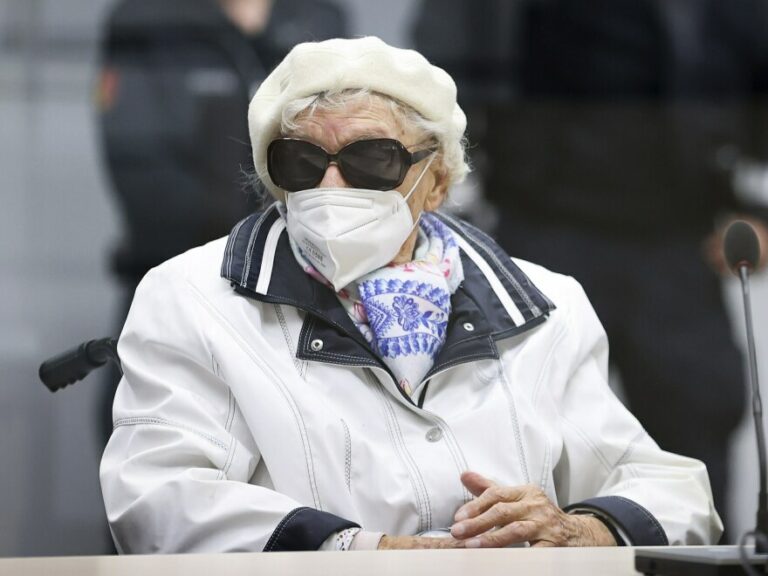More than a year after the vaccine was rolled out, new cases of COVID-19 in the U.S. have soared to their highest level on record at over 265,000 per day on average, a surge driven largely by the highly contagious omicron variant.
New cases per day have more than doubled over the past two weeks, eclipsing the old mark of 250,000, set in mid-January, according to data kept by Johns Hopkins University.
The fast-spreading mutant version of the virus has cast a pall over Christmas and New Year’s, forcing communities to scale back or call off their festivities just weeks after it seemed as if Americans were about to enjoy an almost normal holiday season. Thousands of flights have been canceled amid staffing shortages blamed on the virus.
Dr. Anthony Fauci, the top U.S. infectious-disease expert, said Wednesday that there is no need to cancel small home gatherings among vaccinated and boosted family and friends.
But “if your plans are to go to a 40- to 50-person New Year’s Eve party with all the bells and whistles and everybody hugging and kissing and wishing each other a happy new year, I would strongly recommend that this year we not do that,” he said.
The threat of omicron and the desire to spend the holidays with friends and loved ones have spurred many Americans to get tested for COVID-19.
Aravindh Shankar, 24, flew to San Jose, California, on Christmas from West Lafayette, Indiana, to be with family. Though he felt fine, he decided to get tested Wednesday just to play it safe, since he had been on an airplane.
He and his family spent almost an entire day searching for a testing appointment for him before he went to a site in a parking lot next to the San Jose airport.
“It was actually surprisingly hard,” Shankar said about trying to find a test. “Some people have it harder for sure.”
The picture is grim elsewhere around the world, especially in Europe, with World Health Organization chief Tedros Adhanom Ghebreyesus saying he is worried about omicron combining with the delta variant to produce a “tsunami” of cases. That, he said, will put “immense pressure on exhausted health workers and health systems on the brink of collapse.”
The number of Americans now in the hospital with COVID-19 is running at around 60,000, or about half the figure seen in January, the Centers for Disease Control and Prevention reported.
While hospitalizations sometimes lag behind cases, the hospital figures may reflect both the protection conferred by the vaccine and the possibility that omicron is not making people as sick as previous versions.
COVID-19 deaths in the U.S. have climbed over the past two weeks from an average of 1,200 per day to around 1,500.
Public health experts will be closely watching the numbers in the coming week for indications of the vaccines’ effectiveness in preventing serious illness, keeping people out of the hospital and relieving strain on exhausted health care workers, said Bob Bednarczyk, a professor of global health and epidemiology at Emory University.
CDC data already suggests that the unvaccinated are hospitalized at much higher rates than those who have gotten inoculated, even if the effectiveness of the shots decreases over time, he said.
“If we’re able to weather this surge with hopefully minimal disruptions to the overall health care system, that is a place where vaccines are really showing their worth,” Bednarczyk said.
It’s highly unlikely that hospitalization numbers will ever rise to their previous peak, said Amesh Adalja, senior scholar at the Johns Hopkins Center for Health Security at the Bloomberg School Public Health. Vaccines and treatments developed since last year have made it easier to curb the spread of the virus and minimize serious effects among people with breakthrough infections.
“Its going to take some time for people to get attuned to the fact that cases don’t matter the same way they did in the past,” Adalja said. “We have a lot of defense against it.”
But even with fewer people hospitalized compared with past surges, the virus can wreak havoc on hospitals and health care workers, he added.
“In a way, those hospitalizations are worse because they’re all preventable,” he said.
Several European countries, including France, Greece, Britain and Spain, also reported record case counts this week, prompting a ban on music at New Year’s celebrations in Greece and a renewed push to encourage vaccination by French authorities.
WHO reported that new COVID-19 cases worldwide increased 11% last week from the week before, with nearly 4.99 million recorded Dec. 20-26. But the U.N. health agency also noted a decline in cases in South Africa, where omicron was first detected just over a month ago.
(AP)












2 Responses
I’m confused!
During the distance two waves there was real fear. People were dying r”l. Young, healthy People just perished, Rachmana Litzlan! This seems like the flu: simple influenza! Quite uncomfortable but nobody Baruch Hashem is….. Then why the hype?
> This seems like the flu:
US still has 1,000 people dying daily. What seems to be happening is there are currently two epidemics: Delta and Omicron. Delta is still at the same level as several weeks ago, and increase in cases due to Omicron. Number of cases is an undercount due to home tests not being properly reported. Delta is mostly affecting unvaxed, as before, and it is responsible for most of hospitalized/dying. Omicron goes through whole population at fast speed. It’s main advantage seems to be speed between infection and transmission – about a day instead of several days. So, young people with lots of interactions pass it along at high rate. The good news are that (1) Omicron seems to be milder on the lungs, (2) Omicron sickness provides protection from Delta. (note, not other way around: those who were sick with Delta should expect getting this one also). If these are confirmed, then Omicron will fully push Delta out eventually, but it did not happen so far.